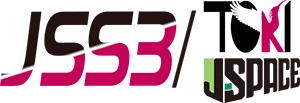Earth observation satellite data processing for GPM/DPR
JAXA Supercomputer System Annual Report February 2024-January 2025
Report Number: R24ER0200
Subject Category: Space Technology
- Responsible Representative: Tomomi Nio, Duputy Director for Mission Operations Systems, Satellite Applications and Operations Center (SAOC)
- Contact Information: GPM Mission Operation Operator(GPM-MOS@ml.jaxa.jp)
- Members: Masanori Toyoda, Akira Yamauchi, Tomohiko Higashiuwatoko, Kazuhiro Sakamoto, Takeshi Masaki, Hisashi Tanaka, Kaito Sugiyama, Takashi Maruyama
Abstract
In recent years, worldwide interest has been increasing about the necessity of grasping the global environmental change. To deal with such problems, various approaches using observation technology from space have been carried out by satellites.
Global Precipitation Measurement (GPM) mission, as follow-on and expansion of Tropical Rainfall Measurement Mission (TRMM) satellite, is an international mission to achieve highly accurate and frequent global rainfall observation. it is carried with multiple satellite, GPM core satellite with Dual-frequency Precipitation Radar (DPR) jointly developed by JAXA and NICT, and with GPM Microwave Imager (GMI) developed by NASA, and another constellation satellites with Microwave Imager. In addition, GSMaP (Global Satellite Mapping of Precipitation), which estimates global precipitation distribution based on data acquired by these GPM core satellites and constellation satellites, is available.
Long-term data accumulation is important to understand global environmental changes, and it is necessary to ensure continuity of data from the TRMM, which operated from 1997 to 2015, the GPM, which is currently in operation.
Reference URL
Please refer to 'GPM Website'.
Reasons and benefits of using JAXA Supercomputer System
Processing of earth observation data includes "operational processing" performed routinely and "re-processing" performed once a year or so for several year data. The purpose of re-processing is to correspond with version-up of computing model and algorithm performed periodically. The amount of observation data grows year by year. Then, we need more and more time to complete reprocessing of all archived observation data. By using supercomputers, the calculation time is greatly shortened, and it is possible to provide products quickly to users.
In addition, the frequency of re-processing is about once a few years, so the necessary period of computer resource for re-processing is limited. If this computer resource is prepared independently, it is inefficient in terms of the computer utilization. The advantage of using JSS3 is that it allows for relatively flexible allocation of shared computer resources when needed. Furthermore, JSS can be used as a remote storage location for master data that cannot be lost.
Achievements of the Year
Reprocessing of GPM/DPR V07A, TRMM/PR V07A, and GSMaP V05A products was completed in FY2023 after a previous major upgrade in December 2021. Therefore, reprocessing at JSS3 was not conducted in FY2024.
In FY2024, the functionality of the JSS3 workflow control tool, which is used in reprocessing, was verified in conjunction with the JSS3 OS upgrade. In addition, the quality of GSMaP V05 reprocessed products were checked at JSS3.
Next major upgrades of GPM/DPR and GSMaP are planed in FY2025 Q4 and FY2026 Q1 respectively. After each major version-up, reprocessing of GPM/DPR V08A, TRMM/PR V08A and GSMaP V06A will be performed at JSS3.
Publications
N/A
Usage of JSS
Computational Information
- Process Parallelization Methods: N/A
- Thread Parallelization Methods: N/A
- Number of Processes: 1
- Elapsed Time per Case: 0 Second(s)
JSS3 Resources Used
Fraction of Usage in Total Resources*1(%): 0.03
Details
Please refer to System Configuration of JSS3 for the system configuration and major specifications of JSS3.
| System Name | CPU Resources Used(Core x Hours) | Fraction of Usage*2(%) |
|---|---|---|
| TOKI-SORA | 0.00 | 0.00 |
| TOKI-ST | 1.17 | 0.00 |
| TOKI-GP | 0.00 | 0.00 |
| TOKI-XM | 0.00 | 0.00 |
| TOKI-LM | 0.00 | 0.00 |
| TOKI-TST | 0.00 | 0.00 |
| TOKI-TGP | 0.00 | 0.00 |
| TOKI-TLM | 0.00 | 0.00 |
| File System Name | Storage Assigned(GiB) | Fraction of Usage*2(%) |
|---|---|---|
| /home | 28.02 | 0.02 |
| /data and /data2 | 131213.33 | 0.63 |
| /ssd | 0.00 | 0.00 |
| Archiver Name | Storage Used(TiB) | Fraction of Usage*2(%) |
|---|---|---|
| J-SPACE | 82.24 | 0.27 |
*1: Fraction of Usage in Total Resources: Weighted average of three resource types (Computing, File System, and Archiver).
*2: Fraction of Usage:Percentage of usage relative to each resource used in one year.
ISV Software Licenses Used
| ISV Software Licenses Used(Hours) | Fraction of Usage*2(%) | |
|---|---|---|
| ISV Software Licenses(Total) | 0.00 | 0.00 |
*2: Fraction of Usage:Percentage of usage relative to each resource used in one year.
JAXA Supercomputer System Annual Report February 2024-January 2025


